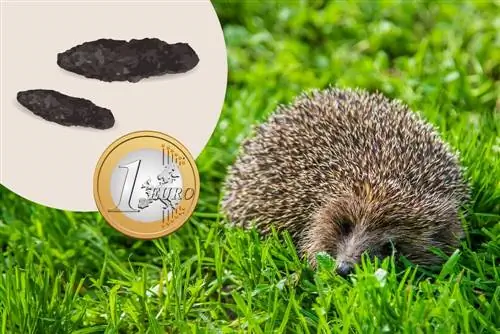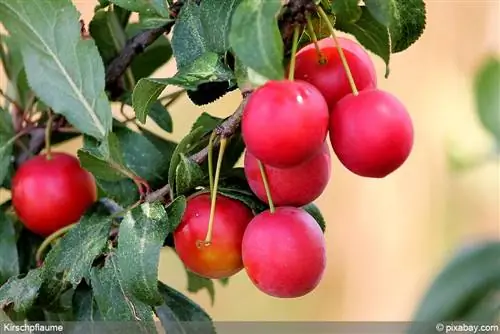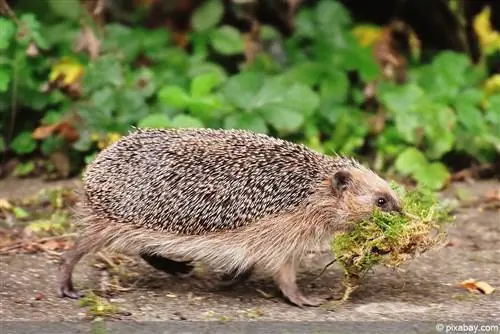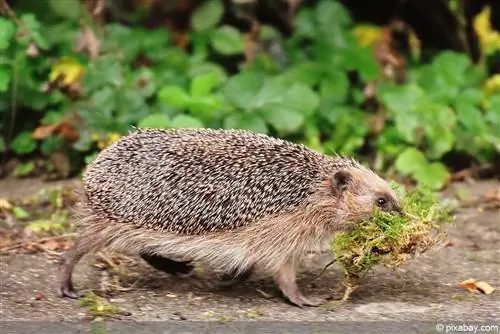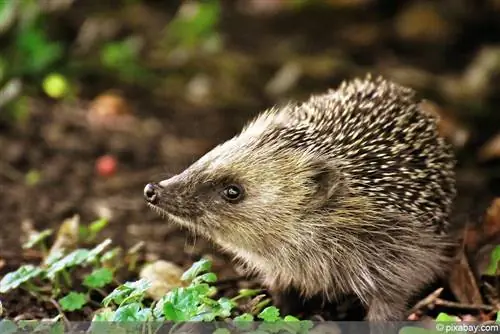- Author admin [email protected].
- Public 2023-12-17 03:39.
- Last modified 2025-01-24 12:45.
If you like cacti as well as exotic plants, you will love the prickly cucumber. Hard to believe but true, the plant belongs to the pumpkin family and is also known as ornamental cucumber or hedgehog cucumber. The spiky structure from North America has little in common with a cucumber - it is more reminiscent of a hedgehog. In the warm season, this plant provides astonishing looks in the garden and on the balcony. The best comes last, the fruits are ideal as an autumn decoration.
Growing from seeds
If you buy the hedgehog cucumber in seed form, you should either grow it in a large pot or sow it directly in the garden from the end of May. Since this plant is incredibly sensitive, it is only allowed to go outside after the Ice Saints, otherwise it might break. There are a few mixtures. Including the Cucumis Carolinus, Cucumis Dipcaseus, Cucumis Metuliferus and many more.
Plants
The small plants from the garden dealer should only be planted in the garden in summer or in a pot directly on the balcony. The hedgehog cucumber also feels at home in a hanging basket. If you want to harvest the fruits of these plants, it is best to plant them in a greenhouse, as they have difficulty producing fruit outdoors. The different Central European climate causes problems for many plants. Anyone who likes to experiment and try out new plants should take the ornamental cucumber to heart. A project that is really fun.
Repotting
The hedgehog cucumber is an annual plant. Repotting is only necessary if it rapidly increases in size and no longer fits in the small flower pot or hanging basket. If you let the ornamental cucumber grow on the balcony, you should monitor the plant regularly to see whether there is still enough space. If not, buy a larger pot and repot the cucumber.
Care
If these are plants that were grown in pots, they first have to get used to the new weather conditions. That's why the plants shouldn't be put in the ground too early or too late. Ornamental cucumbers do not like frost or strong sunshine. While they are still small, the plants will get sunburned in strong sun and that would be counterproductive. Even worse is the icy cold combined with wet conditions. Prickly cucumbers absolutely don't like that. If you want to keep such plants in spring, you should have a good greenhouse or winter garden. The plants there thrive quite positively. Since the cucumbers grow quickly, the shoots should be tied up. It's best to stick a stake in the ground or, as I said, attach it to a hanging basket. If the ornamental cucumber is to bear fruit, the temperature must not be below 15 degrees, as this will negatively affect the ripeness.
Location
That may sound a little contradictory. Ornamental cucumbers need a lot of sun. It is important that the plant does not immediately reach the bright sun. Plants also have to slowly get used to the new circumstances and are therefore more likely to remain protected from a fire. The prickly cucumber grows well in the shade, but there are fewer fruits to harvest because they require warmth. The soil should be moist and covered with mulch. If you create a good subsoil, you save yourself the need for fertilizer afterwards.
Pouring

Water is vital for this plant. The soil should be permanently moist. However, gardeners must not overdo it because cucumbers do not like waterlogging. Anyone who can serve with high humidity will make this plant happy. That's why most fruits are available directly in the greenhouse. The climate there is simply ideal and the soil automatically stays moist due to the high humidity.
Cutting
The ornamental cucumber has one advantage. Cutting is almost unnecessary with this plant. However, it can sometimes happen that the extreme growth causes space problems. In this case, the gardener can use the scissors and trim the cucumber a little. Important: The shoots should stay on because they will later produce the fruits.
Wintering
Since the ornamental cucumber is an annual, there is no overwintering. If you still want to experiment in winter, you should have a suitable greenhouse. These plants only thrive outdoors from mid-May. Rule number 1: Frost is fatal to these plants.
Propagate
If you can't get enough of your ornamental cucumbers, you can sow the seeds directly in spring and look forward to wonderful plants. Sowing is easy and, as with everything, patience is required.
Diseases and pests
Pests are not explicitly known for this plant. If unwelcome pests still appear, it is always better to resort to natural remedies first. For small plant flies, for example, small yellow plates are used that are stuck directly into the soil. The flies stay on it and the plant is not poisoned with fertilizer. If necessary, specialist retailers also have suitable products.
Harvest
The fruits are ripe when they turn orange. In the open field, this should be the case at the end of August. Be careful when harvesting. The spines are quite sharp, so attack them with kid gloves. Opinions on whether you should eat the fruit vary. They are not poisonous, but some are said to cause digestive problems. They also taste quite bitter. In any case, ornamental cucumbers are a wonderful decoration idea for autumn.
Conclusion
If you like to experiment and get to know new things, you can look forward to a wonderful plant that always provides new surprises. Since the plant is still fairly new in this country, there isn't really a lot of research results yet. With a little patience, the plant will also establish itself at your local garden market.
Growing tips
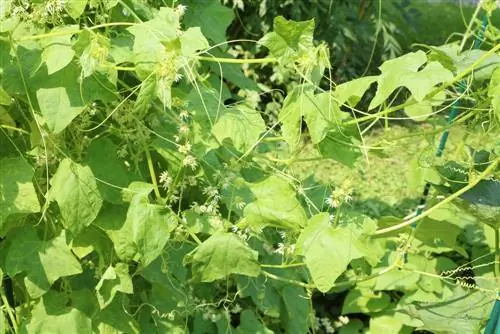
The various ornamental cucumbers are grown from seeds. There are quite a few different varieties on offer, often mixtures of different plants. Recommended are Cucumis canoxyl, Cucumis metuliferus, Cucumis myriocarpus, Cucumis anguria, Cucumis carolinus, Cucumis sativus, Cucumis dipcaseus. Most of these plants only produce fruit in a greenhouse, but if you're keen to experiment, you can also try it outdoors. Some of the plants grow very large. Cultivated for ornamental purposes are Cucumis metuliferus, Cucumis hirsutus and Cucumis disapceus. They can be used in hanging baskets. The pre-culture takes place indoors from mid-April in large pots. Most plants grow very quickly and need to be repotted soon. After the Ice Saints you can also sow the seeds on site.
Care
- Pre-grown plants have to be slowly accustomed to the outdoors. There should be no more night frosts and the plants also have to get used to the sun slowly, otherwise sunburn can occur. Wetness combined with cold nights can be fatal to plants. The greenhouse is definitely the best place. A winter garden does the trick too.
- Prickly or ornamental cucumbers require permanently permeable soil and are sensitive to waterlogging. Nevertheless, they must be watered regularly and must never become dry. The climate should be sunny and warm; a house wall facing south is well suited. High humidity is very beneficial for plant growth.
- Prickly or ornamental cucumbers grow very quickly. You should tie up the shoots, otherwise they will grow like a ground cover and spread enormously. Pruning is often essential if there are other plants nearby.
- Temperatures below 15 degrees delay or prevent fruit ripening.
- Prickly or ornamental cucumbers have not been on the market for long. In the gardens they are still in the experimental phase.


